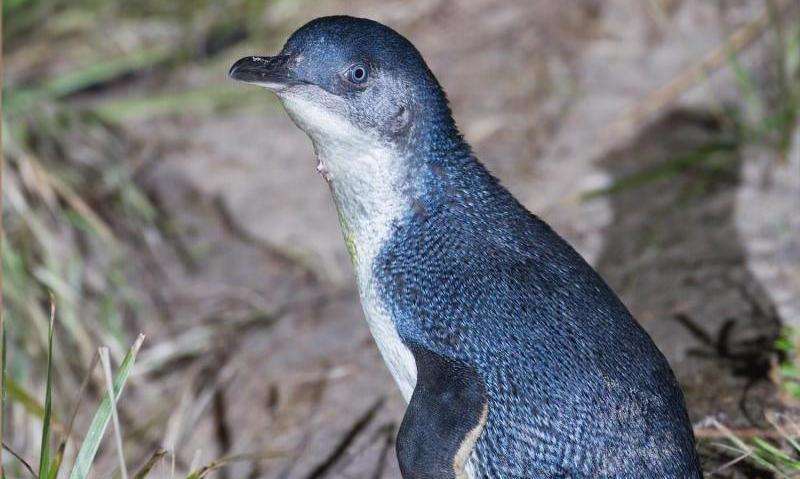This article has been reviewed according to Science X's editorial process and policies. Editors have highlighted the following attributes while ensuring the content's credibility:
fact-checked
peer-reviewed publication
trusted source
proofread
Marine heat waves affecting little penguin population

Research led by The University of Western Australia has found marine heat waves are affecting the breeding, diet and population size of little penguins along Western Australia's coast.
The study, published in the Marine Ecology Progress Series, used data from 1986 to 2019 to investigate the impacts of marine heat waves on breeding outcomes, body condition, diet composition, population size and mortality of little penguins on Penguin Island off WA.
Lead author Dr. Belinda Cannell, from UWA's School of Biological Sciences and Oceans Institute, said breeding outcomes were negatively impacted but body condition was not.
"Diet composition changed immediately after the marine heat waves with sandy sprat (Hyperlophus vittatus), the penguins' typical major prey component, replaced by scaly mackerel (Sardinella lemuru), a tropical fish species," Dr. Cannell said.
The study found the population decreased by 80% following the 2011 heat wave.
"Many more penguins than usual died from starvation in 2011, which was unusual," she said. "Another study I've published has shown that typically more penguins in the Perth metropolitan region die from injuries associated with watercraft."
In 2011 and 2012 penguins also died from toxoplasmosis, a parasitic infection linked to cats, in which the parasite lays its eggs. There are no cats on Penguin Island but it is thought the transmission was caused by parasite eggs moving into the marine environment from storm water drains which were eaten by fish the penguins then ate.
"It is likely that the poor breeding outcomes for multiple years following the marine heat wave resulted in low recruitment into the colony and, ultimately, an aging population of breeding penguins," Dr. Cannell said.
The Penguin Island colony is already near the maximum habitable temperature and critical thresholds are likely to be exceeded, especially during the time they spend on land during breeding and molting.
"Marine heat waves on the west coast of Australia impacted the breeding participation, breeding success, diet composition, population size, nesting distribution, mortality due to starvation and presence of parasites in little penguins," Dr. Cannell said.
"Without informed management, we will very likely lose this genetically important population of little penguins."
More information: BL Cannell et al, Marine heatwaves affect breeding, diet and population size but not body condition of a range-edge little penguin colony, Marine Ecology Progress Series (2023). DOI: 10.3354/meps14425
Journal information: Marine Ecology Progress Series
Provided by University of Western Australia


















